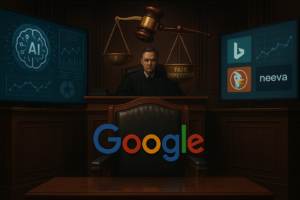The Role of Artificial Intelligence in Media Manipulation and Fact-Checking
In today’s rapidly evolving digital landscape, artificial intelligence (AI) has emerged as a double-edged sword in the realm of media. On one hand, AI has revolutionized content creation, enabling the production of realistic videos, audio, and images at an unprecedented scale. On the other hand, this very capability has given rise to sophisticated forms of misinformation and disinformation, thus challenging the authenticity of information disseminated across platforms.
The Power and Peril of AI in Media Creation
AI’s ability to generate content is undeniably powerful. Algorithms such as Generative Adversarial Networks (GANs) can create hyper-realistic media that can deceive even the most discerning eyes. In 2023, a study by the Massachusetts Institute of Technology revealed that over 60% of people could not distinguish between real and AI-generated images. This blurring of lines between reality and fabrication poses significant ethical challenges.
The incident involving the viral video claiming Syrian President Bashar al-Assad’s resignation is a prime example. The audio in the video was generated using AI, creating a false narrative that spread rapidly across social media platforms. AI’s role in creating such content underscores the importance of robust fact-checking mechanisms.
AI in Fact-Checking: A Necessary Counterbalance
To counteract the rise of AI-generated misinformation, AI itself has become an indispensable tool in fact-checking. Advanced algorithms can quickly analyze vast amounts of data, identifying patterns and discrepancies that may indicate manipulated content. Websites like TrueMedia.org utilize AI to detect alterations in audio and video, providing a crucial line of defense against digital deception.
A notable instance of AI’s effectiveness in this role was demonstrated when AI algorithms identified the Bashar al-Assad video as manipulated. By analyzing audio frequencies and inconsistencies in speech patterns, AI was able to confirm the video’s inauthenticity, thereby preventing the spread of false information.
The Ethical Implications
While AI has proven to be an effective tool in both creating and debunking fake media, it raises significant ethical concerns. The ease with which AI can generate misleading content poses a threat to public trust and the integrity of information. As AI technology continues to advance, the potential for misuse becomes even more pronounced.
The ethical dilemma is further complicated by the lack of regulatory frameworks governing the use of AI in media. Without clear guidelines, the responsibility falls on content creators, platform providers, and fact-checkers to ensure ethical use of AI technologies. This calls for a collaborative approach to establish standards and practices that safeguard against the misuse of AI in media.
The Future of AI in Media Integrity
Looking forward, the role of AI in maintaining media integrity will be pivotal. As AI technologies become more sophisticated, so too must the systems designed to detect and counteract misinformation. This includes developing more advanced AI algorithms capable of identifying increasingly subtle forms of manipulation.
Moreover, education and awareness are crucial. By equipping individuals with the knowledge to critically evaluate media content, society can build resilience against the influence of AI-generated misinformation. Initiatives aimed at improving media literacy should be prioritized, empowering individuals to navigate the digital information landscape effectively.
Conclusion
The intersection of AI and media presents both challenges and opportunities. As AI continues to evolve, its impact on media authenticity will undoubtedly grow. By leveraging AI for fact-checking and fostering ethical practices, we can harness its potential while mitigating its risks. The path forward involves collaboration, regulation, and education, ensuring that AI serves as a tool for truth rather than deception.
In this age of digital abundance, discerning fact from fiction is more important than ever. As we navigate this complex terrain, AI stands as both a challenge and an ally in our quest for truth.


